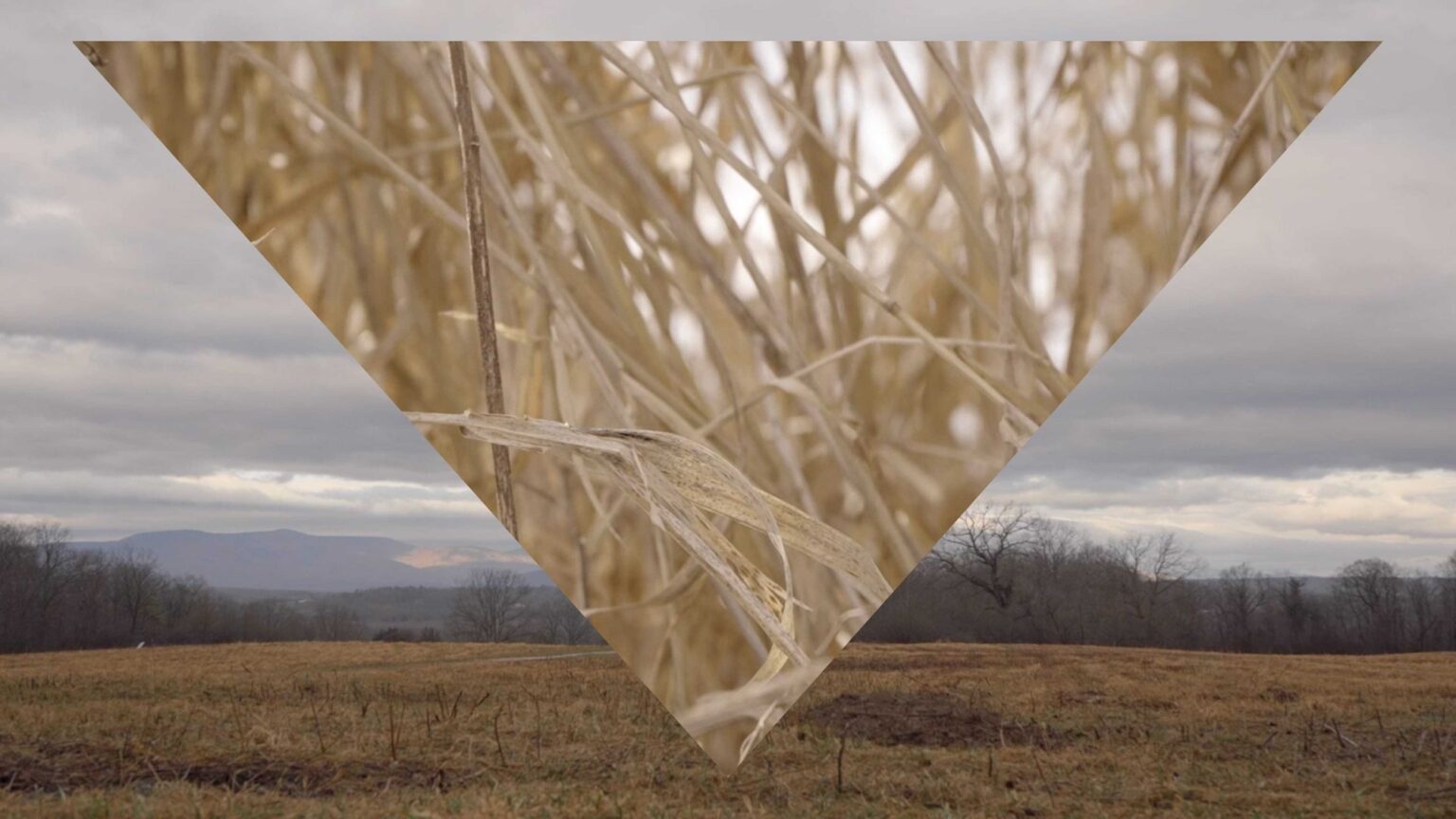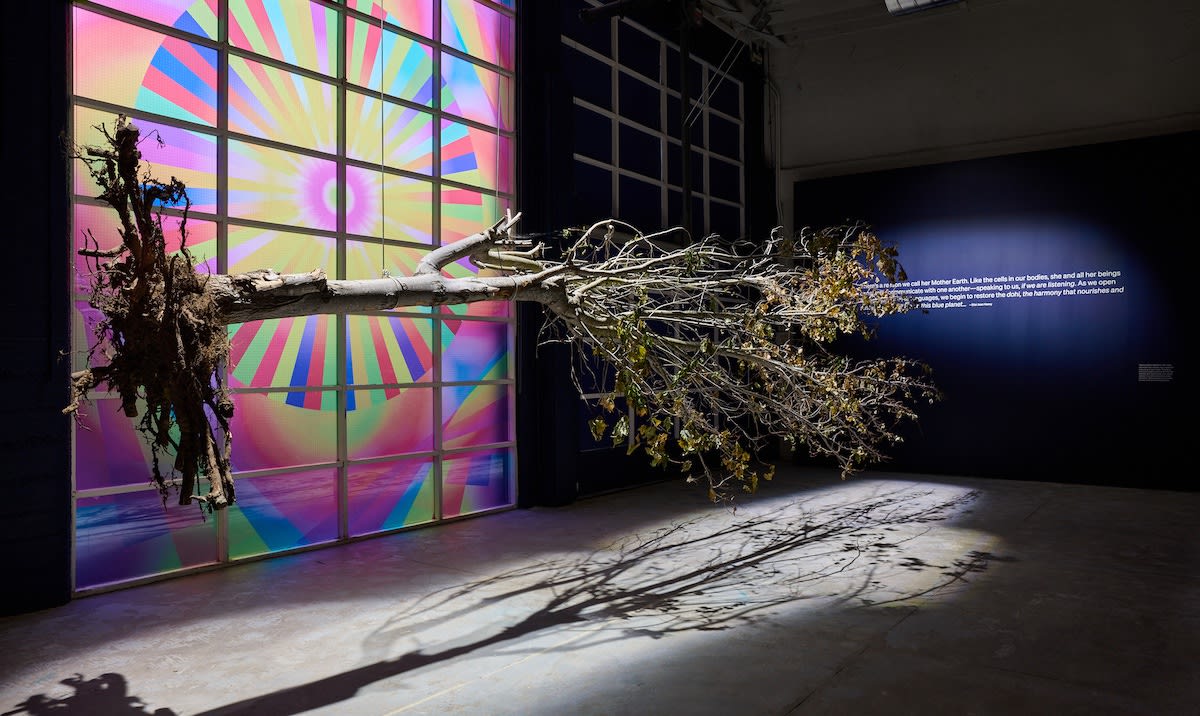
Bold patterns and dreamy imagery point to questions about the complexities of identity and a threatened ecology
At the recently opened Institute of Contemporary Art San Francisco (ICA SF), Jeffrey Gibson presents his new immersive video installation This Burning World (through March 26, 2023). As the work honors the natural world, it also reminds us of our colonial history, where the land we stand upon has a troubling past and uncertain ecological future.
Recently adding video to his repertoire of bright geometric paintings, weavings, and beaded boxing bags, Gibson’s larger practice draws upon his Choctaw and Cherokee heritages and Indigenous textile patterns. In his mesmerizing works the artist plays with the legibility of language, culture, and self, prompting us to slow down and pause to grapple with the complexity of meaning and representation. In This Burning World, the artist again asks viewers to slow down and pause, but now to reflect upon our relationship to the natural world as inhabitants and stewards.

Still, Jeffrey Gibson, This Burning World, 2022.
Gibson’s vibrantly colored and patterned work seizes the ICA’s generous scale and museum-quality installation. On the two opposing walls in an elongated gallery, Gibson projects five rectangular videos seamlessly butted up against each other, resulting in two panoramas that mirror the vast horizontal landscape. Perfectly filling the long gallery, Gibson suggests a linear path, where the videos could be read in sequence as you enter and exit the gallery.
Additionally, when standing in the middle of the room, the videos resonate with each other on the opposing walls. For instance, viewers might see the moon rising and crawling to the top of the frame on one wall, and then directly opposite it, the moon might appear low and beginning its ascent. Most markedly, no matter where one stands in the gallery, in the middle or at its edges, it is difficult to garner a sense of the entire work, and thus the wholeness of the world.

Jeffrey Gibson, The Future is Present, 2011-2022 at ICA SF. Photo by Impart Photography.
Gibson is based in Upstate New York; much of his footage depicts the Hudson Valley, known for its natural beauty and where artist and environmentalist Thomas Cole (1801—1848) painted picturesque landscapes of the American wilderness. Gibson intervenes on the colonialist American landscape to present images of water, fire, grassy fields, snowy forests, and cobwebs overlaid and masked with Indigenous geometric designs. As the patterns cut, frame, and obscure each of the 10 videos, he creates a kaleidoscopic view where clarity is always in flux.
In the most exciting sequences, the artist uses masks to cut and slice the imagery in triangular shapes like teeth. When the triangles are angled, they suggest the optical illusion of receding space or bending time. Additionally, when layered upon each other, the geometry breaks the landscapes into smaller shapes that further distort and obscure the imagery.

Jeffrey Gibson. Photo by Brian Barlow.
Featuring composer, performer, artist, and educator Joan Henry in the audio and video, Gibson subtly imparts the poetry of the human presence. As viewers hear Henry’s voice chanting, she appears in the video, frequently masked with triangles. As the shapes track Henry’s movement, she becomes animated as pattern that blends into and moves through the landscape, claiming and restoring place.
Most strikingly, through Gibson’s bold patterns and dreamy imagery, he asks how looking, language, and knowing become intertwined in the complexities of identity. Gibson’s use of abstraction and symbolic form, suggests the filters through which one might process, be with, and know the world.

